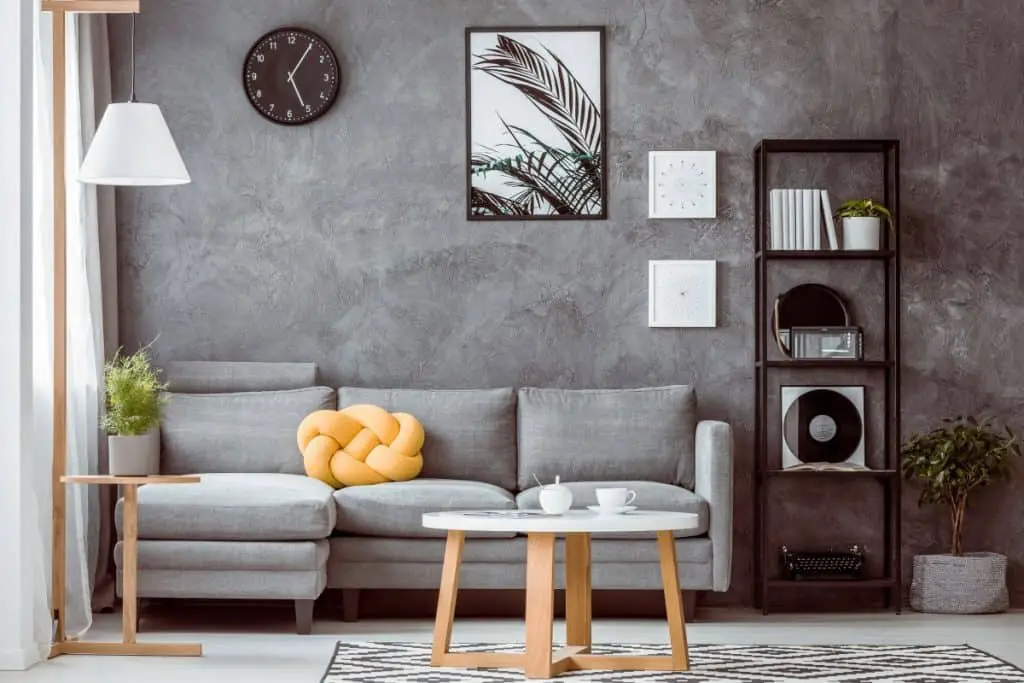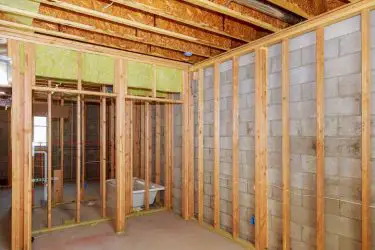Concrete is a reliable building material for both indoor and outdoor structures, but it is not the most exciting. If you want to spice up your look, adding dye to your concrete when building is an option. It is often expensive and can only be done with new structures. Another great choice is painting your concrete, and we’re here to tell you how to do it.
Painting concrete will look good if you buy the proper type of paint, apply and seal it correctly, and let it dry before touching it. Paint on concrete will last 7-10 years depending on the brand you choose. Paint will also last longer on older concrete than newer concrete due to porosity.
This is all good news if you are looking to paint your concrete surface, but don’t jump into it without knowing how to properly paint your concrete. Read on for suggestions on how to make your painted concrete look the best it can, no matter where it is or how big of a budget you have.

Table of Contents
How To Paint Concrete Indoors
Painting a concrete wall or floor inside your home or structure is a great and simple way to change up your look without needing to build or remove anything from your home.
- Remove everything from the room or area you are painting.
- Wash the surface until its clean. You should wash it with a degreasing solution to get any debris off of the surface (unseen debris can cause the paint to prematurely peel) then repeatedly wash the surface with water until the water from yout mop och rag comes out clean.
- Wait until the surface is completely dry. This will take a few days due to the porosity of concrete.
- Fill any holes, cracks, or dents with a patching compound.
- Sand down any uneven or overly textured areas.
- Vacuum the dust away and wipe the area clean.
- Apply two coats of primer. Let the first layer dry completely before applying the second layer. You sould use a paint roller for a quick and thorough application.
- Apply a least two coats of epoxy paint. Let the first layer dry completely before applying the second layer. Similar to the primer, you should use a roller or a paint compressor to apply the coats.
- Apply several coats of masonry sealer. Once again, let each coat dry completely before applying the next.
- Wait for it to completely dry. Once it’s done it is safe to move any furniture, decorations, and other items back into the area you were painting.
- Finished!
How To Paint Concrete Outdoors
Painting concrete outdoors is similar in some ways and different in others as compared to painting indoors.
Similarly to painting indoors, you must wash your concrete surface to the best of your ability. When cleaning an outdoor surface like a driveway, patio, or set of steps, it is smart to use a power washer as outdoor surfaces collect more dirt and grit than anything inside.
Also read: How To Clean a Concrete Driveway Without a Pressure Washer

Wash your concrete and de-grease it as much as you can, then let it dry. After it is dry, you need to fill in any cracks, holes, or gaps. Allow the filler to dry, then get to sanding your surface.
After removing any dust or dirt that accumulated during the sanding process, you can start the priming, painting, and sealing. One tip to keep in mind when painting outdoors is to use a smaller hand brush when painting near areas you don’t want to cover, such as siding or pillars.
The biggest difference between indoor and outdoor painting is not how it’s done, but when it’s done.
You can paint your indoor surface whenever you have the time, but be sure to paint your outdoor surface when there is no precipitation, as rain, snow, or hail will mess up the drying process of your paint.
After your surface is painted, avoid putting any vehicles, furniture, or feet on it for a few days to be sure it is completely dry.
We have written a more in-depth guide on how to paint on concrete and make it last, which might be with checking out.
What Materials To Use When Painting Concrete
Now that you know the steps you have to take to paint your surface, it is time to talk about the materials you need to make your paint job look the best and last the longest!
Tools
General tools:
- Rubber gloves
- Goggles
- A paint mask
Tools for preparation:
- Concrete filler
- Putty knife
- Fine-grit sandpaper discs and sheets
- Power sander
- Pole sander
Washing tools:
- Mop and bucket or power washer
- A small hand rag
- Soap, bleach, and degreaser
Priming, painting, and sealing tools:
- Primer
- Epoxy paint
- Masonry sealant
- Paint roller
- Small hand brush
- Paint tray
After these tools are collected, it’s time to get your painting materials.
Primer
To ensure the best base for your paint, use an exterior grade concrete primer, also called block primer.
A few great options that can be found at your local home improvement store are:
- Behr’s Concrete and Masonry Bonding Primer- $17.78/gallon
- Zinsser 5 gallon Block Filler 2X Primer- $14.15/gallon
- Glidden Stain Block Primer- $25.99/gallon
Block primer dries in as fast as 2 hours, but you should wait for at least 8. If you are spreading your project out, that is fine, but don’t wait any longer than 30 days to paint your surface after priming.
Paint
If you want your paint to last, masonry paint is the best option. It goes for about $20.00/gallon from most brands and can be found at any home improvement store or online.
Read more: Best Concrete Paint and what you should know about it
Sealant
The last thing you need is a sealant. The most popular brand of sealant is Seal Krete- it comes in clear, tinted, and colored options, meaning you can choose what is best for your project.
Seal Krete sealant costs an average of $30.00 from any seller.
Making Your Paint Last
Once your sealant dries and the newly painted surface is in use, there are things you can do to prevent peeling, scuffing, or discoloring your paint.

- Put soft pads on the feet of any furniture you bring into the room
- Wash your surface regularly to prevent discoloration.
- Regularly check your surface for scratches and use a sealant to patch them up.
- Cover the surface with newspaper or cloth when you are doing something messy like working on a car, painting, or doing a DIY project.
Now it’s time to go forward with the courage, confidence, and knowledge to go forward with your DIY concrete paint job. If you get lost or discouraged, come back to the article and review what you may have missed.



